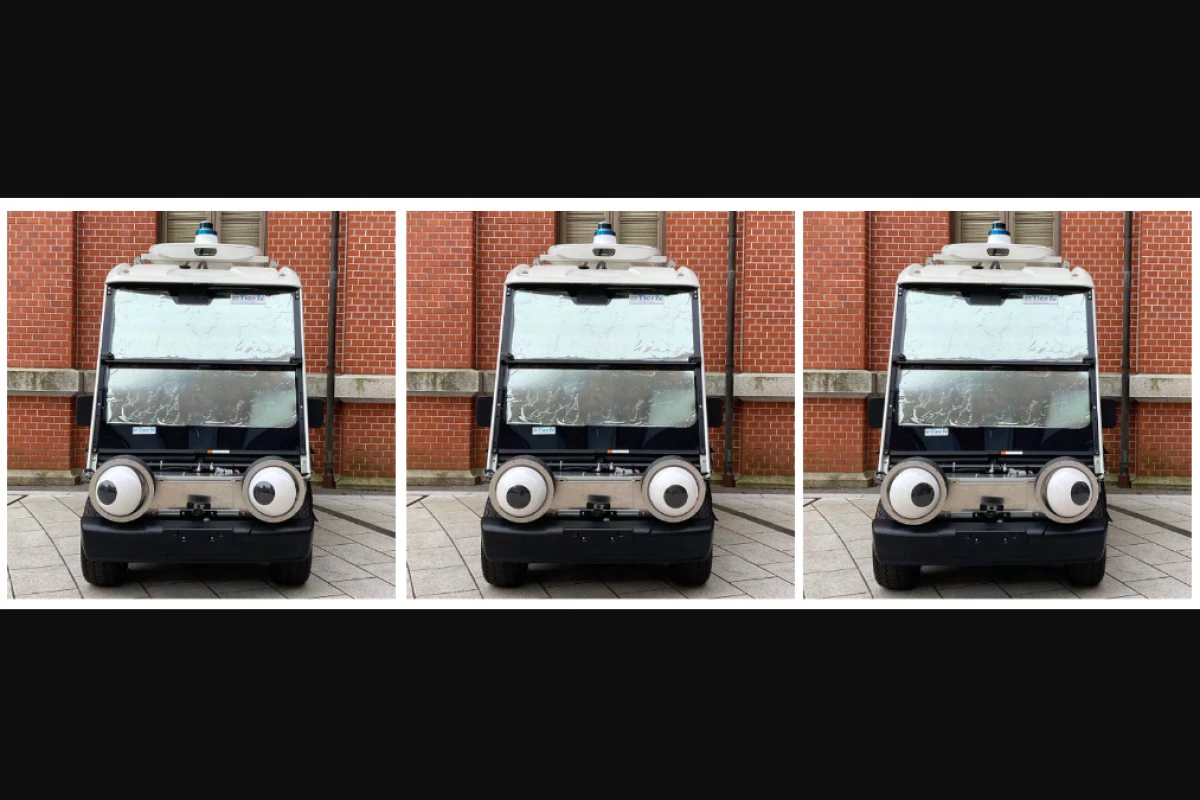When crossing the road in front of a car, pedestrians should make eye contact with the driver, to make sure they've been seen. However, what if the car has no driver? New research suggests that the vehicle should then have eyes of its own.
For the recent study, scientists at the University of Tokyo equipped a golf cart with non-seeing human-like robotic eyes, which were operated by the driver. That person was hidden from outside view by a one-way mirror film on the windshield, making the cart appear to be driverless.
Next, an omnidirectional camera was used to shoot four videos in which the cart approached a crosswalk. In one video, it stopped and waited for a pedestrian, with the direction of its eyes' gaze suggesting that it had seen them. In another, it drove through without stopping, its eyes not looking at the pedestrian. The other two videos depicted the same two scenarios – stopping or not stopping – although the cart was not equipped with the eyes.

Eighteen adult volunteers (nine men, nine women) then viewed the videos via VR headsets, in which they saw the environment from the perspective of the pedestrian. They viewed the videos multiple times in random order, and in each case were given three seconds to decide if it was safe to cross the road in front of the cart.
First of all, it was found that men were more likely to cross when it wasn't safe (i.e: when the cart didn't look like it was going to stop), while women were more likely not to cross when it was safe (i.e: when the cart did stop). That said, both errors occurred less frequently when the cart was equipped with the eyes – men reported that the situation felt riskier when the eyes were looking away from them, while women reported feeling safer when the eyes were looking at them.
The scientists do acknowledge that their findings might have been different in a larger-scale study, with a greater number of participants and scenarios. Nonetheless, they believe that eyes on driverless cars may be a good idea.
"Moving from manual driving to auto driving is a huge change," said Prof. Takeo Igarashi. "If eyes can actually contribute to safety and reduce traffic accidents, we should seriously consider adding them. In the future, we would like to develop automatic control of the robotic eyes connected to the self-driving AI (instead of being manually controlled), which could accommodate different situations."
A paper on the research was presented at the 14th International Conference on Automotive User Interfaces and Interactive Vehicular Applications.
And goofy as the technology may sound, this isn't the first study to suggest that it could be helpful. In 2018, tests conducted by Jaguar Land Rover indicated that pedestrians felt safer crossing in front of autonomous pods when the vehicles were equipped with moving eyes that "watched" them.
Source: University of Tokyo





